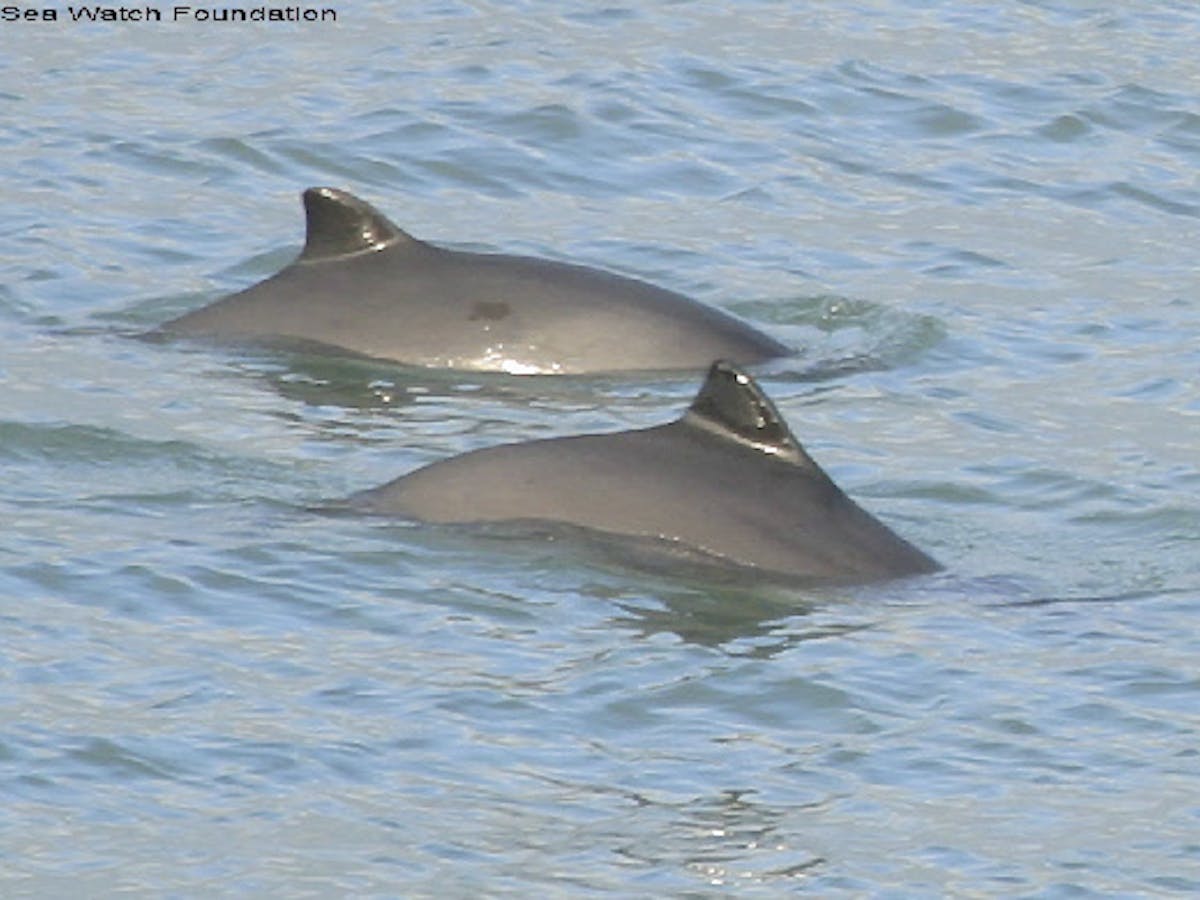The harbour porpoise is the smallest species of cetacean found in European waters, measuring around 1.2 – 1.5 metres in length and weighing 50 – 60 kg. It is often confused with dolphins, particularly the bottlenose dolphin.
The porpoise is rotund in shape, with a small triangular dorsal fin which shows briefly above the surface – usually little of the animal is seen, as it rarely leaves the water entirely. It has a small rounded head with no distinct beak.
Harbour porpoises do not usually approach boats nor bow ride, although they can be observed at close quarters from our boats. And in late summer, may actually approach vessels. Harbour porpoises generally live in groups of two or three animals, or singly, but occasionally forming groups of 10 – 20 animals.
The main mating season is summer, and birth takes place 10-11 months later (usually between May and August with a peak in June). Calves are suckled for between four and eight months, and the mother usually reproduces every 1-2 years. Porpoises take three to four years to reach sexual maturity and have a relatively short life span usually of no more than 15 years, although animals have been recorded up to 24 years of age.
The harbour porpoise eats a varied diet of fish, cephalopods and crustaceans, related to local availability of food in European waters, herring, mackerel, sand-eel, gobies cod pollack, and whiting are all known to form prey of the harbour porpoises.



